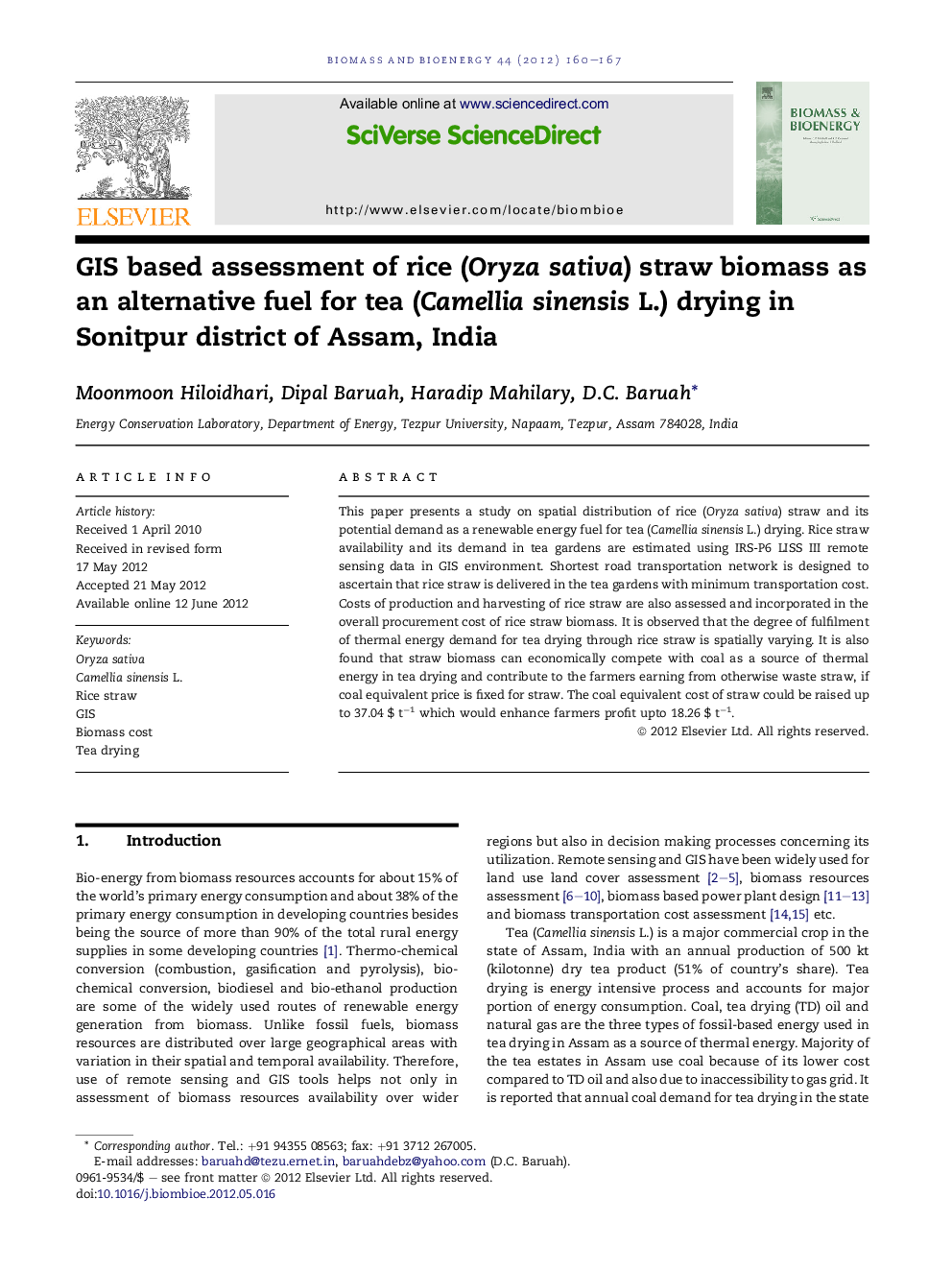| Article ID | Journal | Published Year | Pages | File Type |
|---|---|---|---|---|
| 677332 | Biomass and Bioenergy | 2012 | 8 Pages |
This paper presents a study on spatial distribution of rice (Oryza sativa) straw and its potential demand as a renewable energy fuel for tea (Camellia sinensis L.) drying. Rice straw availability and its demand in tea gardens are estimated using IRS-P6 LISS III remote sensing data in GIS environment. Shortest road transportation network is designed to ascertain that rice straw is delivered in the tea gardens with minimum transportation cost. Costs of production and harvesting of rice straw are also assessed and incorporated in the overall procurement cost of rice straw biomass. It is observed that the degree of fulfilment of thermal energy demand for tea drying through rice straw is spatially varying. It is also found that straw biomass can economically compete with coal as a source of thermal energy in tea drying and contribute to the farmers earning from otherwise waste straw, if coal equivalent price is fixed for straw. The coal equivalent cost of straw could be raised up to 37.04 $ t−1 which would enhance farmers profit upto 18.26 $ t−1.
Graphical abstractFigure optionsDownload full-size imageDownload as PowerPoint slideHighlights► GIS mapping of rice straw supply and demand as alternative fuel for tea drying. ► Shortest road transportation network mapping for cost-efficient biomass transport. ► Rice straw can economically compete with coal as an energy source for tea drying. ► Economic benefit to farmers upto 18.26 $ t−1 of rice straw.
